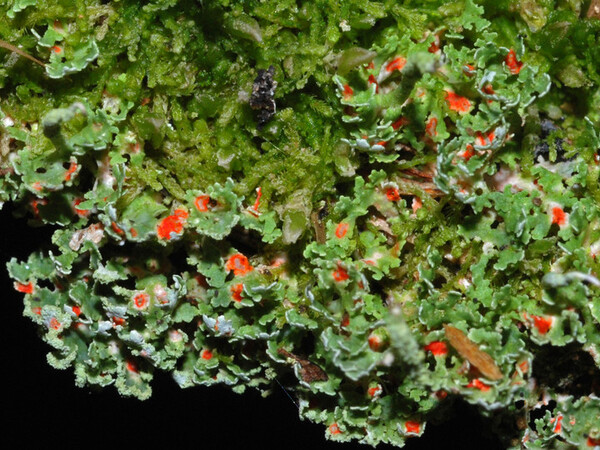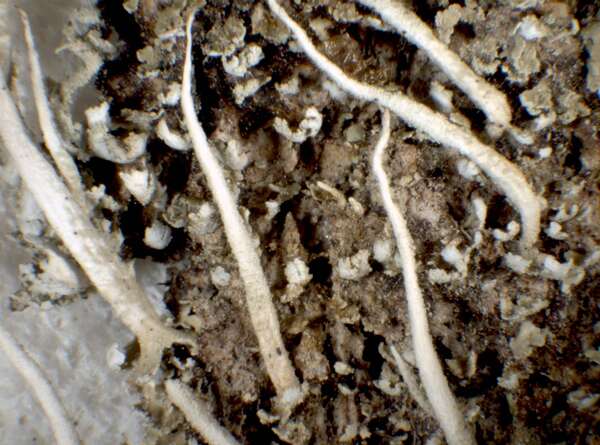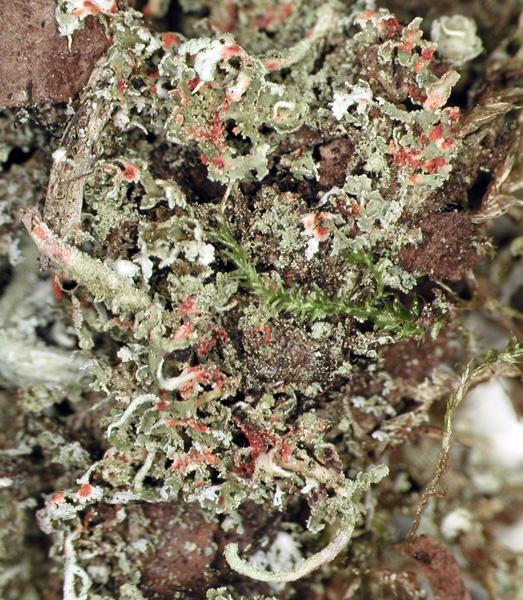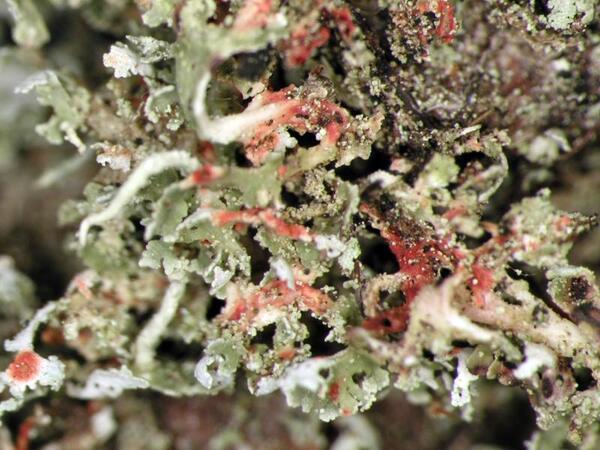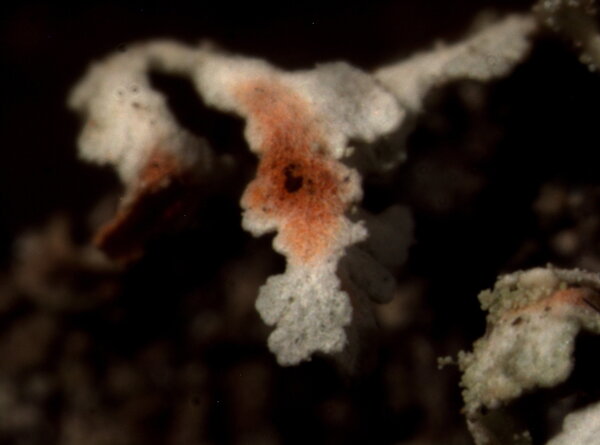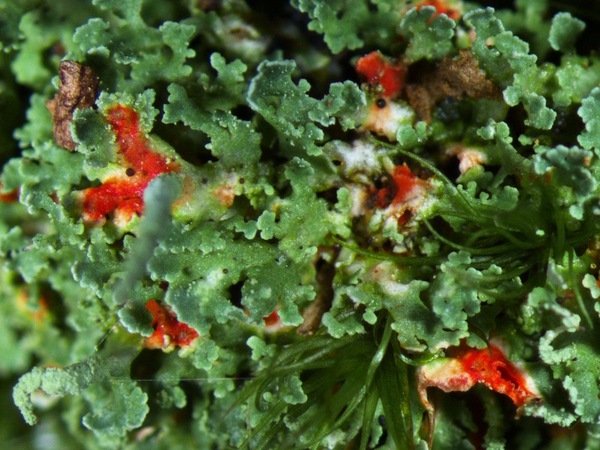Cladonia norvegica Tønsberg & Holien
Nord. J. Bot., 4: 79, 1984.
Synonyms:
Distribution: N - Frl, Ven. S - Cal (Puntillo 1996).
Description: Primary thallus squamulose, the squamules usually persisting, small, 2-4 mm wide, incised or narrowly lobed, green above, white beneath, often with bright red spots caused by mite infections, sometimes sorediate along margins and on the lower side. Podetia bacilliform, slender, hollow inside, 1.5-2(-3) cm tall, usually cupless and pointed, rarely with very narrow cups in fertile specimens, pale green, grey-green or whitish, sometimes with red spots at base, the surface partly corticate and occasionally squamulose in basal parts, otherwise farinose-sorediate, the soredia 20-50 μm in diam. Apothecia rather rare, ochraceous or pinkish brown, subspherical, terminal. Pycnidia developing at tips of podetia, with a colourless jelly. Conidia hyaline, curved. Photobiont chlorococcoid. Spot tests: K-, C-, KC-, P-, UV- or UV+ pale white. Chemistry: barbatic and 4-O-demethylbarbatic acids; rhodocladonic acid in the red spots on primary squamules and podetia (not in the apothecia!).Note: a cool-temperate to boreal-montane lichen found on decaying trunks and stumps in moist-shaded habitats such as ancient, undisturbed woodlands and, when epiphytic, on basal parts of conifers; probably more widespread in the Alps, but very rare in Southern Italy. It is included in the Italian red list of epiphytic lichens as “Endangered” (Nascimbene & al. 2013c).
Growth form: Fruticose
Substrata: bark and lignum
Photobiont: green algae other than Trentepohlia
Reproductive strategy: mainly asexual, by soredia, or soredia-like structures (e.g. blastidia)
Most common in areas with a humid-warm climate (e.g. most of Tyrrenian Italy)
Commonnes-rarity: (info)
Alpine belt: absent
Subalpine belt: extremely rare
Oromediterranean belt: absent
Montane belt: very rare
Submediterranean belt: absent
Padanian area: absent
Humid submediterranean belt: absent
Humid mediterranean belt: absent
Dry mediterranean belt: absent

Predictive model
Herbarium samples
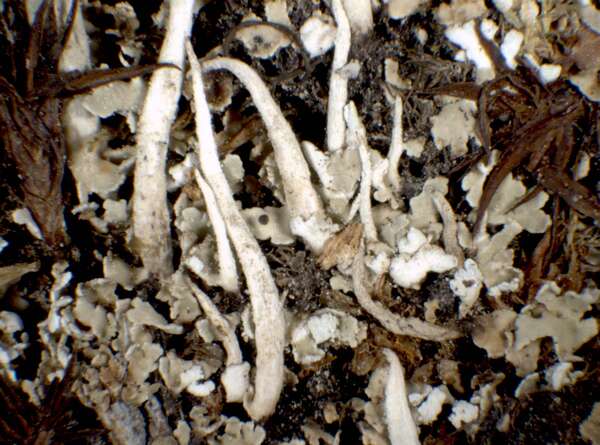

P.L. Nimis; Owner: Department of Life Sciences, University of Trieste
Herbarium: TSB (9170)
2001/12/04
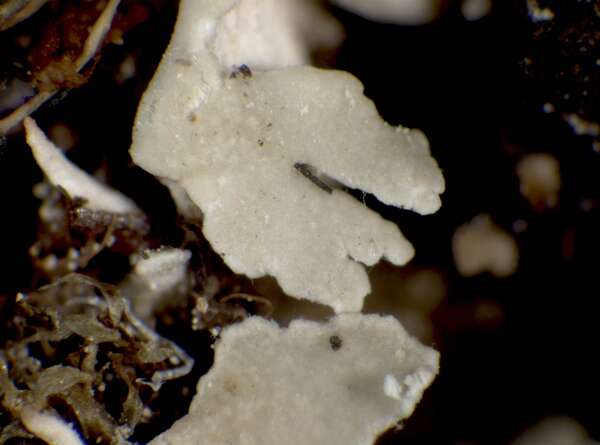

P.L. Nimis; Owner: Department of Life Sciences, University of Trieste
Herbarium: TSB (9170)
2001/12/04
detail of primary squamule
Growth form: Fruticose
Substrata: bark and lignum
Photobiont: green algae other than Trentepohlia
Reproductive strategy: mainly asexual, by soredia, or soredia-like structures (e.g. blastidia)
Most common in areas with a humid-warm climate (e.g. most of Tyrrenian Italy)
Commonnes-rarity: (info)
Alpine belt: absent
Subalpine belt: extremely rare
Oromediterranean belt: absent
Montane belt: very rare
Submediterranean belt: absent
Padanian area: absent
Humid submediterranean belt: absent
Humid mediterranean belt: absent
Dry mediterranean belt: absent

Predictive model
| Herbarium samples |


P.L. Nimis; Owner: Department of Life Sciences, University of Trieste
Herbarium: TSB (9170)
2001/12/04


 Index Fungorum
Index Fungorum
 GBIF
GBIF
